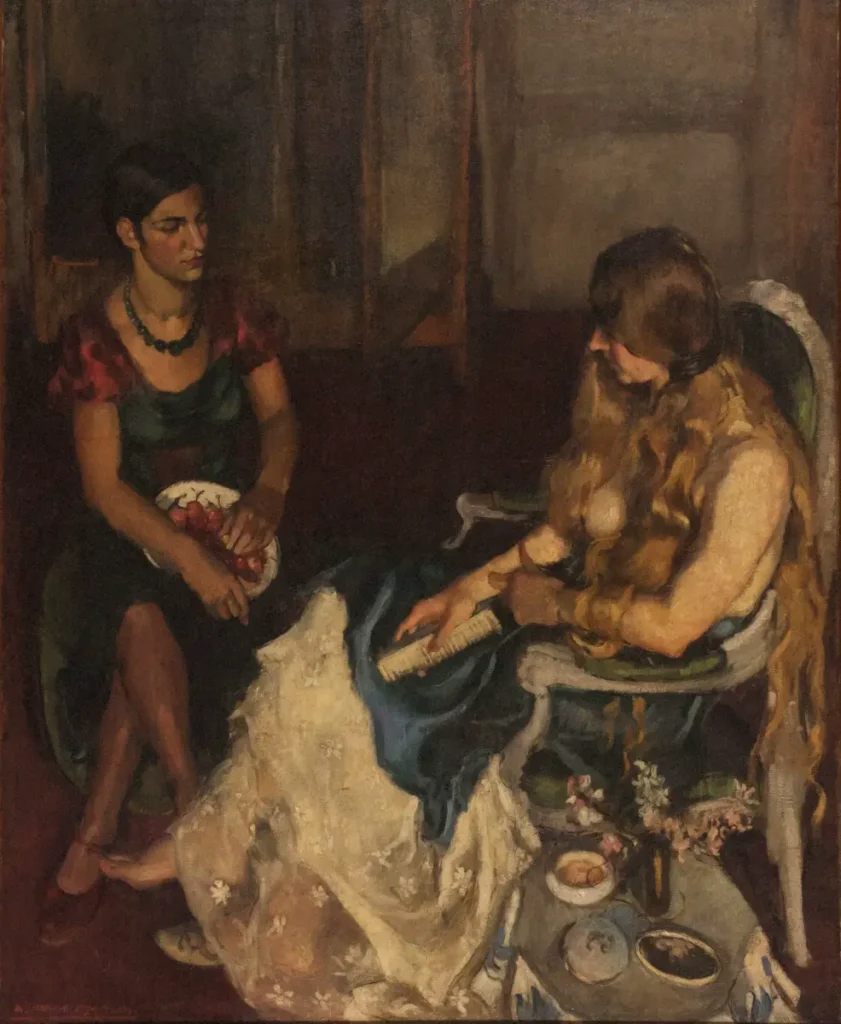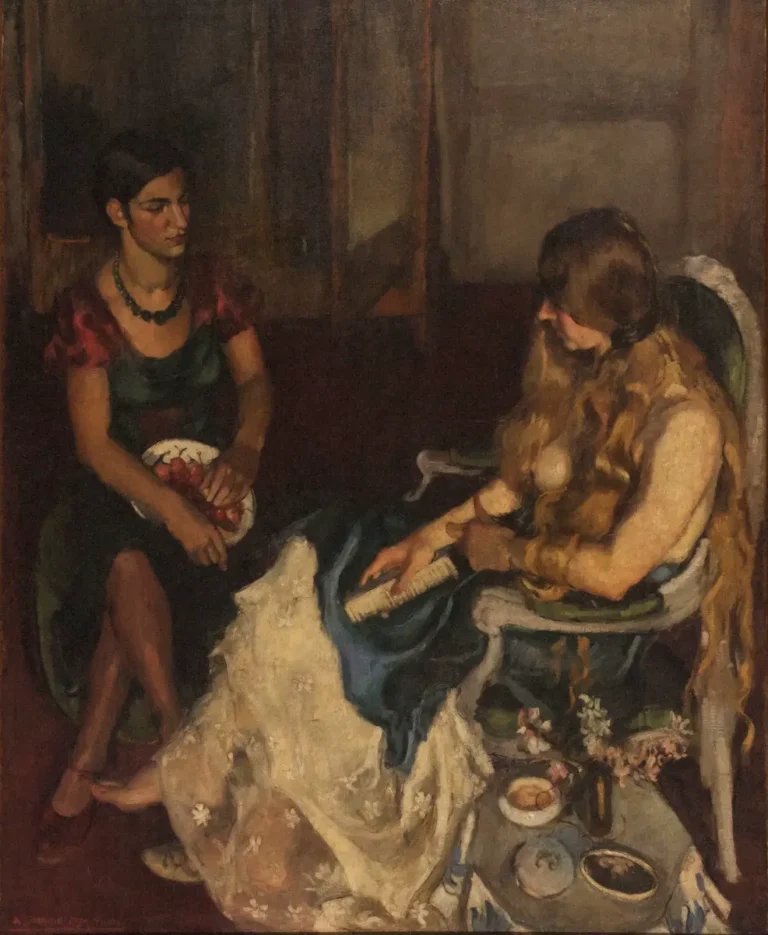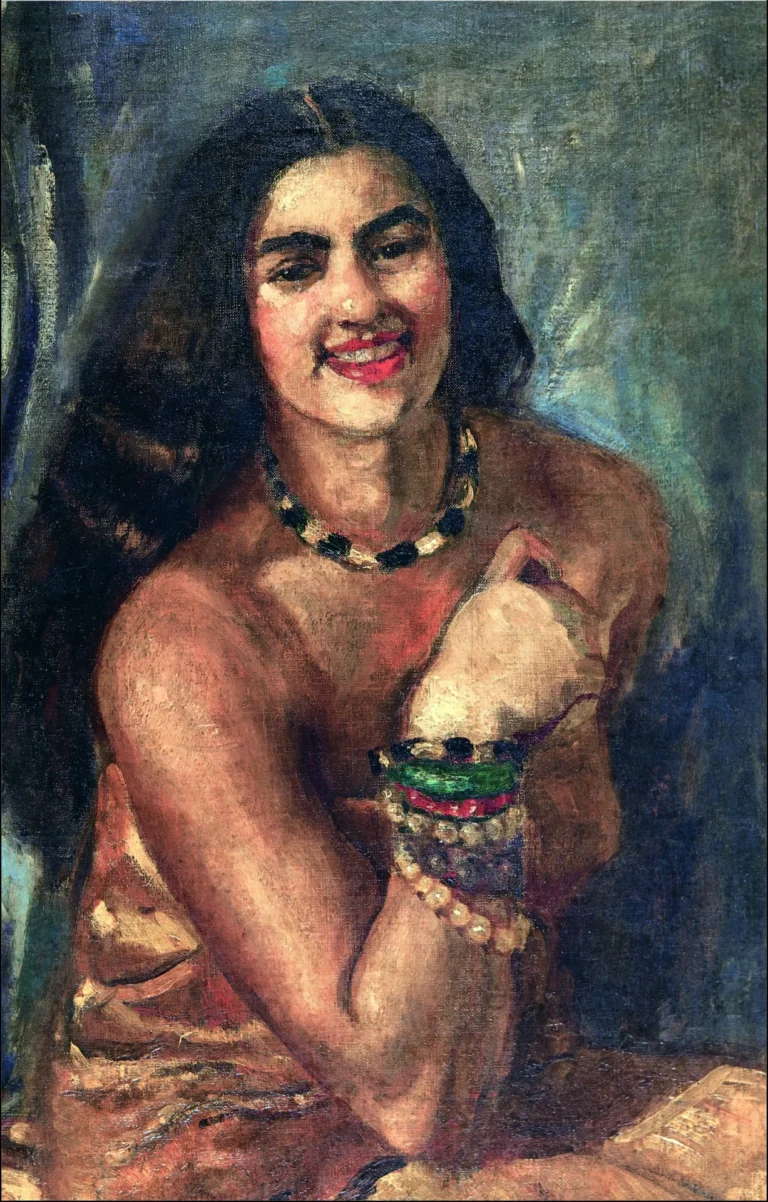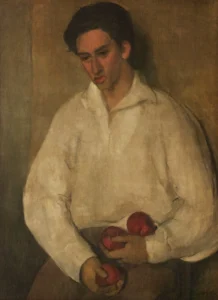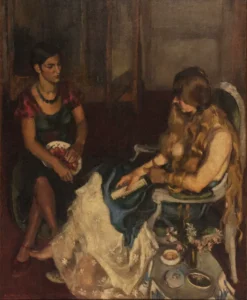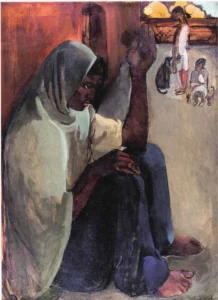Young Girls
Young Girls evokes a poignant exploration of identity and cultural duality through the depiction of two young women: Amrita Sher-Gil's sister Indira and her French friend Denise Proutaux. Painted in 1932, the artwork juxtaposes Western influences with Indian roots, revealing the artist's keen observations and unique artistic maturity. The piece, notable for its striking contrast between the confident posture of Indira and the more vulnerable demeanor of Denise, captures the essence of Sher-Gil’s reflections on her own life, making it a pivotal aspect of her artistic journey.
Year 1932
About the Artwork
The story behind Young Girls is deeply tied to Amrita Sher-Gil's own experiences as a young artist navigating the cultural intersections of East and West. Painted while studying at the École des Beaux-Arts in Paris, the artwork portrays her sister Indira in Western clothing, symbolizing the influences of European culture, while Denise Proutaux, her French friend, embodies a more relaxed and complex European persona. Through this composition, Sher-Gil reflects her internal struggle and the broader themes of cultural identity, ultimately hinting at the profound impact of her education and the diverse influences that shaped her artistic vision. The painting not only highlights her technical prowess but also marks the beginning of her exploration of women’s roles in society.




